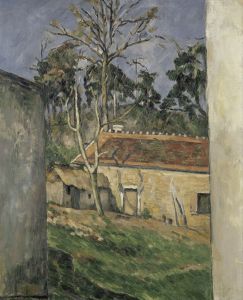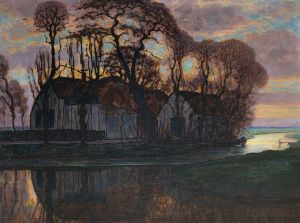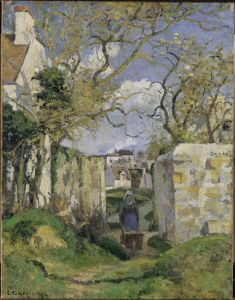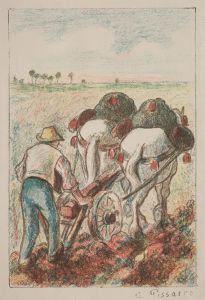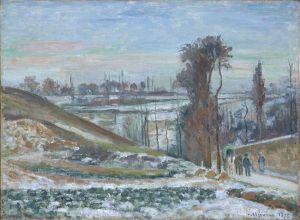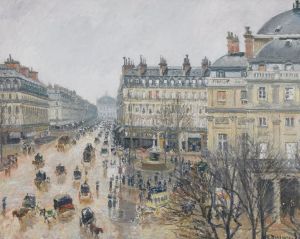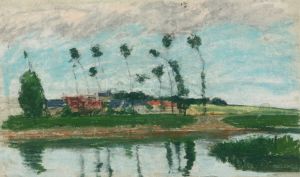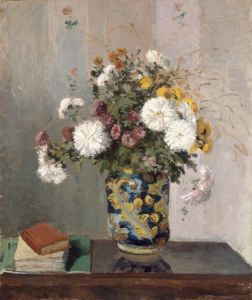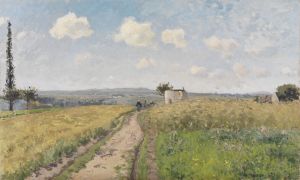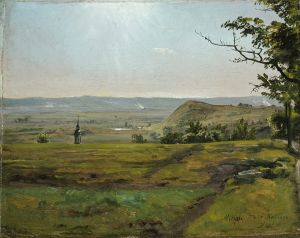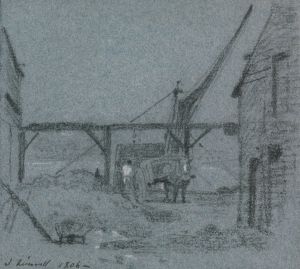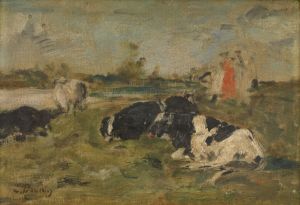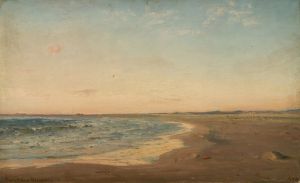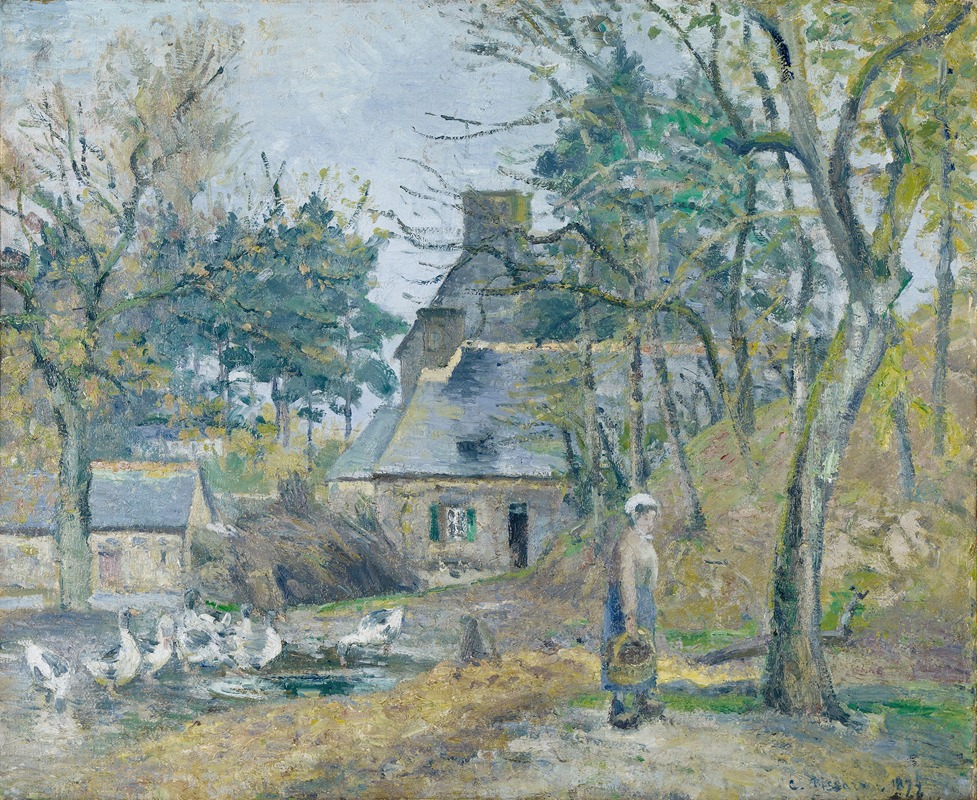
La ferme à Montfoucault
A hand-painted replica of Camille Pissarro’s masterpiece La ferme à Montfoucault, meticulously crafted by professional artists to capture the true essence of the original. Each piece is created with museum-quality canvas and rare mineral pigments, carefully painted by experienced artists with delicate brushstrokes and rich, layered colors to perfectly recreate the texture of the original artwork. Unlike machine-printed reproductions, this hand-painted version brings the painting to life, infused with the artist’s emotions and skill in every stroke. Whether for personal collection or home decoration, it instantly elevates the artistic atmosphere of any space.
La ferme à Montfoucault is a painting by the renowned French artist Camille Pissarro, a leading figure in the Impressionist movement. Painted in 1874, this artwork exemplifies Pissarro's dedication to capturing rural life and the natural environment with a keen eye for light and atmosphere. The painting depicts a farm scene in Montfoucault, a small village in the Normandy region of France, where Pissarro spent time during the early 1870s.
Camille Pissarro was born on July 10, 1830, on the island of St. Thomas in the Danish West Indies. He moved to Paris in 1855, where he became involved with a group of artists who would later be known as the Impressionists. Pissarro's work is characterized by his commitment to plein air painting, a technique that involves painting outdoors to capture the natural light and colors of the landscape. This approach is evident in La ferme à Montfoucault, where Pissarro skillfully renders the interplay of light and shadow across the farm buildings and surrounding fields.
The painting features a rustic farmstead, with a series of buildings nestled amidst lush greenery. Pissarro's brushwork is loose and expressive, capturing the textures of the foliage and the weathered surfaces of the farm structures. The composition is balanced, with the farm buildings occupying the central portion of the canvas, framed by trees and open sky. Pissarro's use of color is subtle yet effective, with a palette dominated by earthy tones and soft greens, punctuated by the occasional splash of brighter hues.
La ferme à Montfoucault is notable for its depiction of rural life, a theme that was central to Pissarro's oeuvre. Throughout his career, Pissarro was drawn to scenes of agrarian life, often portraying farmers, fields, and villages with a sense of empathy and respect. This focus on rural subjects set him apart from many of his contemporaries, who were more inclined to depict urban scenes and modern life.
The painting was created during a pivotal period in Pissarro's career. In 1874, the first Impressionist exhibition was held in Paris, marking a significant moment in the history of art. Pissarro was one of the founding members of the Impressionist group and participated in this groundbreaking exhibition, which challenged the conventions of the art establishment and introduced a new way of seeing the world.
La ferme à Montfoucault reflects Pissarro's commitment to capturing the essence of the natural world and his belief in the importance of portraying everyday life. His work had a profound influence on the development of modern art, inspiring future generations of artists to explore new techniques and perspectives.
Today, Camille Pissarro is celebrated as one of the great masters of Impressionism, and his paintings are held in major museums and collections around the world. La ferme à Montfoucault remains a testament to his skill as a painter and his dedication to depicting the beauty and simplicity of rural life.





